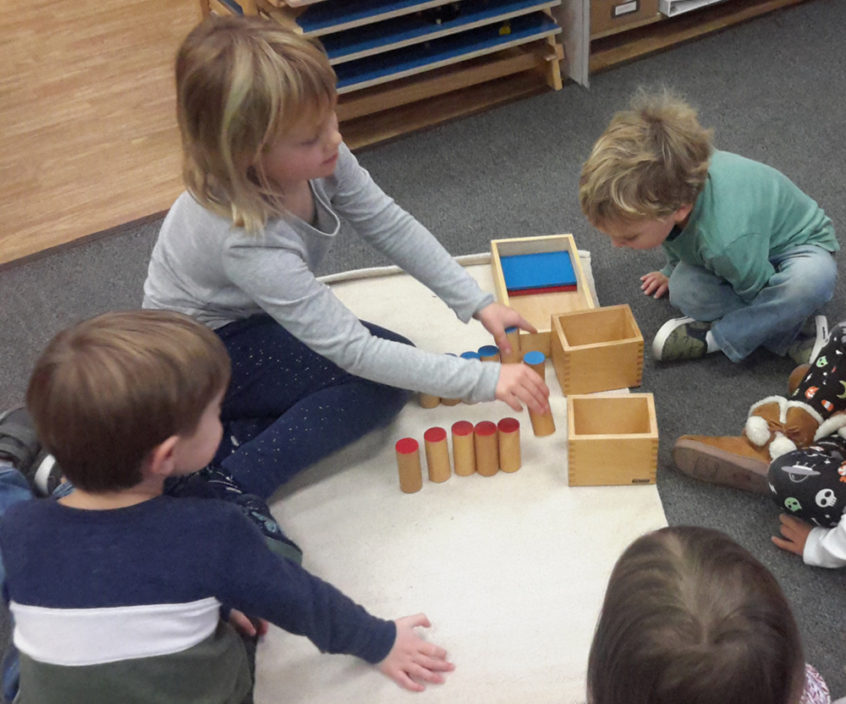Montessori classrooms offer incredible advantages to students who are able to benefit from being surrounded by peers who are both older and younger. This unique set up allows younger children to seek help from their peers through direct questioning or observation, and gives older children an opportunity to be a teacher or leader in his or her actions. At Southwest Montessori Academy we are lucky enough to witness the usefulness of this set up every day in our classrooms. Please continue reading to see one example of how children use this set-up to grow as individuals.
In our classroom one fine morning a student (let’s call her Nina) was waiting for a lesson from a teacher. The teacher was busy with another student, so she asked an older student, Sam, to help Nina. Though Sam was interested in the request, he was also not quite sure he could help as he had not done that work in a while and he was planning to do something else.
First Sam said, “I don’t think I can because I have not done that in a while.” As he said this, his eyes were focused on the work and he became quiet. It was obvious he was pensive and mentally working through his options. Then he said, “Maybe I could just help her get started and Nina can come get me if she has more questions. I can try to help her.” The teacher thought this was a reasonable plan.
Sam started helping Nina and you could see his shoulders go back in confidence just a little bit, and it was clear he was holding his chin just a little high. After he showed the lesson, Nina began working independently to repeat the work as Sam had, while Same then chose a challenging work for himself, which he had been avoiding thinking it was too hard.
This story exemplifies why a multi-age classroom is beneficial for all. Sam’s level of self-esteem and confidence was raised because he got to see how capable he really was and Nina got a new lesson even though the teacher was busy. The effect of helping or teaching someone builds confidence and independence.
